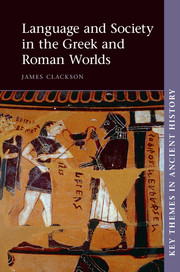Book contents
- Frontmatter
- Contents
- List of maps
- List of figures
- List of tables
- Acknowledgements
- List of abbreviations
- 1 The linguistic ecology of the Mediterranean
- 2 States of languages/languages of states
- 3 Language and identity
- 4 Language variation
- 5 Language, gender, sexuality
- 6 The languages of Christianity
- Conclusion: Dead languages?
- Bibliographic essay
- References
- Index
- Plate Section
2 - States of languages/languages of states
Published online by Cambridge University Press: 05 May 2015
- Frontmatter
- Contents
- List of maps
- List of figures
- List of tables
- Acknowledgements
- List of abbreviations
- 1 The linguistic ecology of the Mediterranean
- 2 States of languages/languages of states
- 3 Language and identity
- 4 Language variation
- 5 Language, gender, sexuality
- 6 The languages of Christianity
- Conclusion: Dead languages?
- Bibliographic essay
- References
- Index
- Plate Section
Summary
The case of Old Persian
‘Darius the king proclaims: This is what I did after I became king.’ In around 520 BCE the Persian King Darius thus recorded his achievements in a massive Res Gestae, a rock inscription covering over 350 m, located over 100 m up a cliff face on Mount Bisitun in western Iran. The rock is engraved with Darius's own record of his achievements in three different language versions. The first version is in Elamite, a non-Indo-European language of ancient Iran which had been used as the administrative language even before the advent of the Achaemenid dynasty under Cyrus the Great forty years earlier. The second is in Akkadian (in particular, in the variety known as Babylonian), which was the usual language of administration and international affairs in the Near East from 1500 to 500 BCE (for instance, the fourteenth-century BCE correspondence between the renegade Egyptian Pharaoh Akhenaten and the rulers of the Hittites and the Mitanni was in Akkadian). The third version is in Old Persian, Darius's native language, and here written in its own semi-syllabic cunei- form script, which the king claims to have invented. Old Persian is written on a number of other, less extensive, inscriptions erected by Darius. It continued in use by the later Achaemenids up until the mid-fourth century bce, although the false archaisms and corruptions of the texts written in the reigns of Artaxerxes II (404 — 358 BCE) and Artaxerxes III (358 — 338 BCE) show a loosening grip on the language. Old Persian is also found written on prestige objects such as seals and alabaster bowls and in texts on precious metals buried under the foundations of buildings, when it is nearly always accompanied by parallel versions in other languages, including in some cases another international language, hieroglyphic Egyptian.
- Type
- Chapter
- Information
- Language and Society in the Greek and Roman Worlds , pp. 33 - 62Publisher: Cambridge University PressPrint publication year: 2015



